Types of Garage Doors
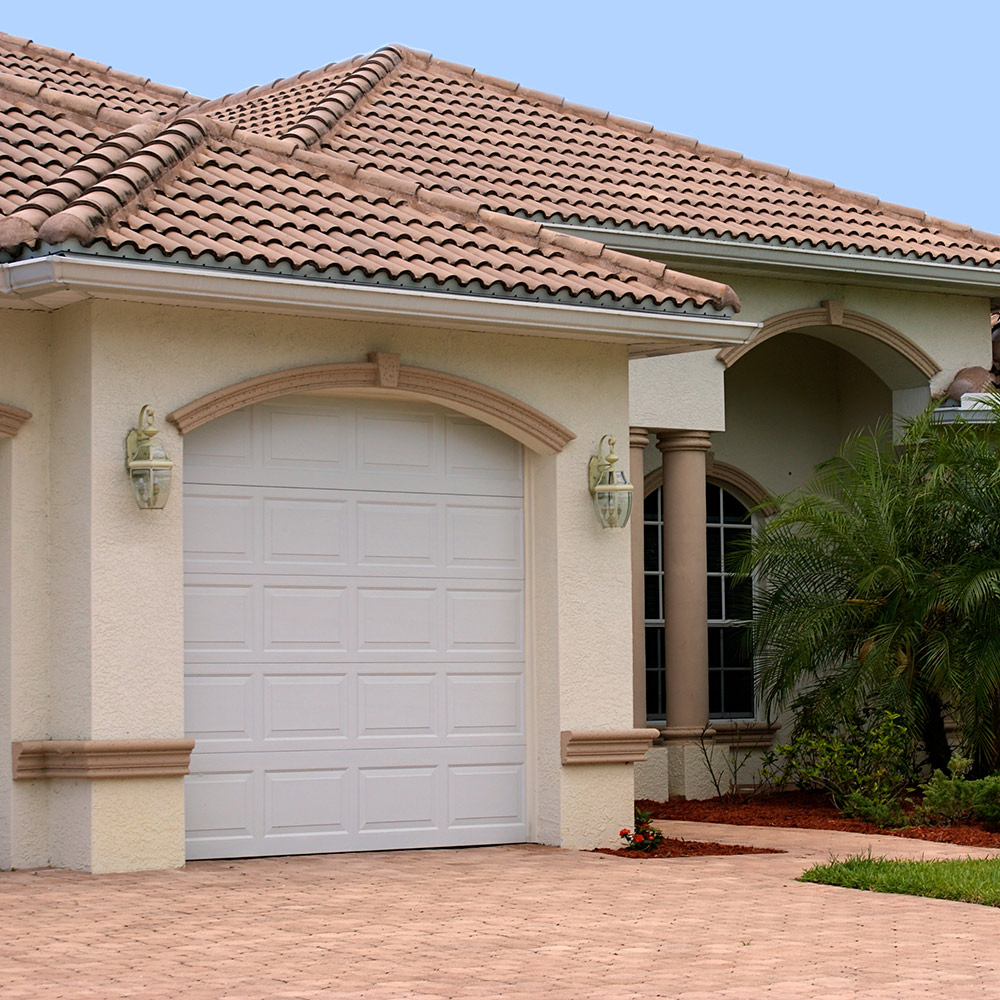
Last updated September 7, 2023
Your garage does more than protect your vehicle from the elements. Because the garage may account for more than a quarter of your home's front or side facade, its appearance has a big impact on the overall look of your home. As a result, the garage doors you choose can add to or detract from curb appeal. Read on to learn about the different types of garage doors and how to choose one that will put an attractive finishing touch on your home.
Table of Contents
Traditional Garage Doors
Farmhouse Garage Doors
Contemporary Garage Doors
Craftsman Garage Doors
Carriage Garage Doors
Insulated Garage Doors
Traditional Garage Doors

Traditional garage doors exemplify timeless style. With their classic details, they work well with traditional, Tudor, Southern, Georgian and other classic architectural styles. The following are common characteristics of traditional garage doors:
- Raised panels arranged in rows.
- Often made of steel.
- Windows tend to have decorative flourishes like grid panes, beveled frames or scrollwork details.
Farmhouse Garage Doors

Farmhouse garage doors draw inspiration from the countryside. Their barn-like details tend to best suit rustic-style architecture like farmhouse, mountain, log and French country homes. Sngle and double farmhouse garage doors often feature the following:
- May have single or double cross panels, recessed panels or divided raised panels that resemble slats.
- Arched and grid-pane windows are common.
- Vintage-style hardware is inspired by barns.
- Light, medium and dark brown finishes are typical.
- Often made of wood or composite materials.
Contemporary Garage Doors
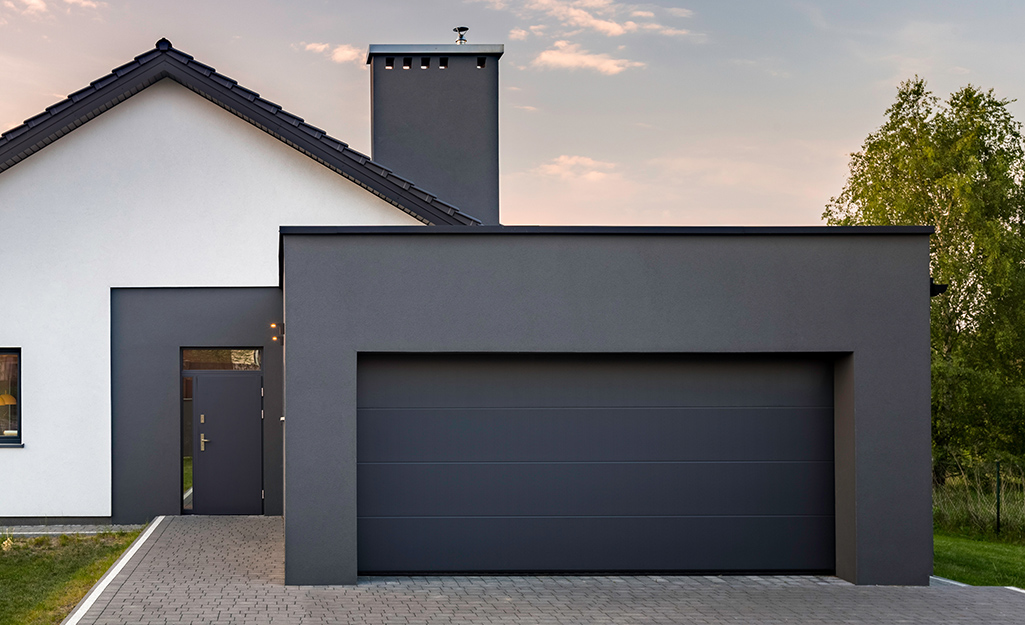
Contemporary garage doors reflect more modern design trends and are generally less ornamental than other styles. You'll see them most often on modern, contemporary, prairie and mid-century modern homes.
- Clean, simple lines.
- Often made of steel.
- Minimalist, with no ornamentation.
- Come in a wide range of garage door colors to match or contrast a home's facade.
- Boxy windows may be positioned vertically along the side instead of the top for an asymmetrical effect.
Craftsman Garage Doors
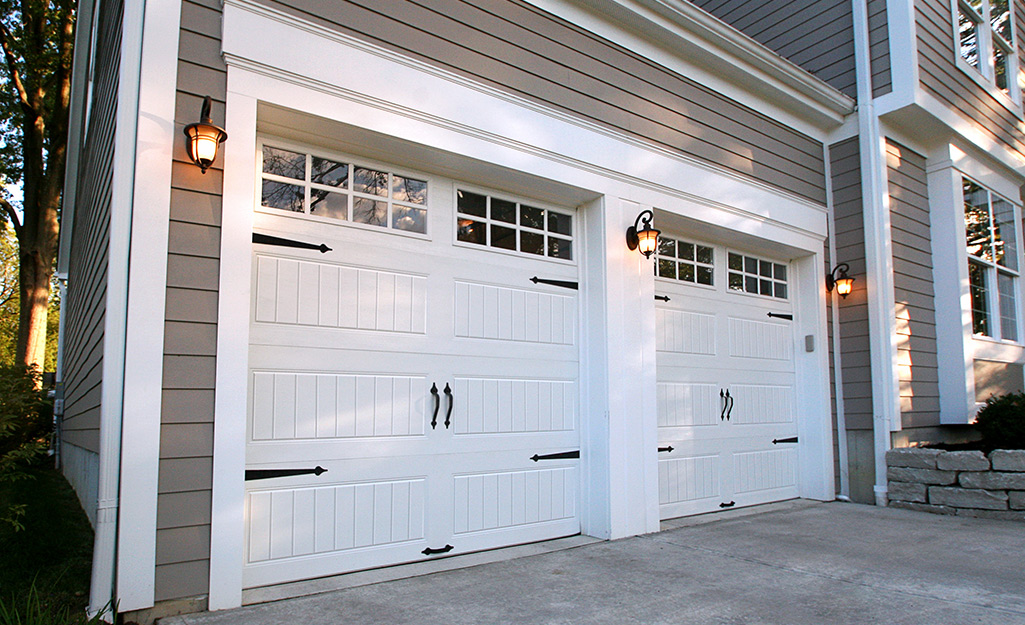
Craftsman garage doors feature timeless details and frequently display well-defined lines. With these key characteristics, they coordinate well with ranch, craftsman, Cape Cod and other more classic architectural styles. The following are common characteristics of craftsman garage doors:
- Clean, straight lines with structured moulding.
- Usually feature vertical recessed panels.
- Vintage-style artisan hardware.
- Windows are square or rectangular.
- Made from a variety of materials, including wood and metal.
- Come in a wide range of colors—but brown are the most popular.
Carriage Garage Doors
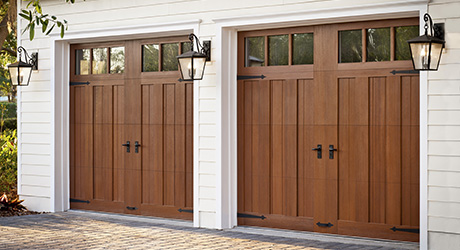
Like other traditional designs, carriage garage doors are timeless and remain in style season after season. Their classic character complements many architectural styles except modern and contemporary. Carriage garage doors typically feature:
- Horizontal or vertical raised panels.
- Arched or square windows usually have grid panes.
- Vintage-style decorative hardware.
- Traditionally made of wood, composite or steel, finished to resemble wood.
- A medium or dark brown color.
Tip: Remember that suggested architecture styles are suggestions, not rules. Choosing a different type of garage door could embolden your home's exterior.
Insulated Garage Doors
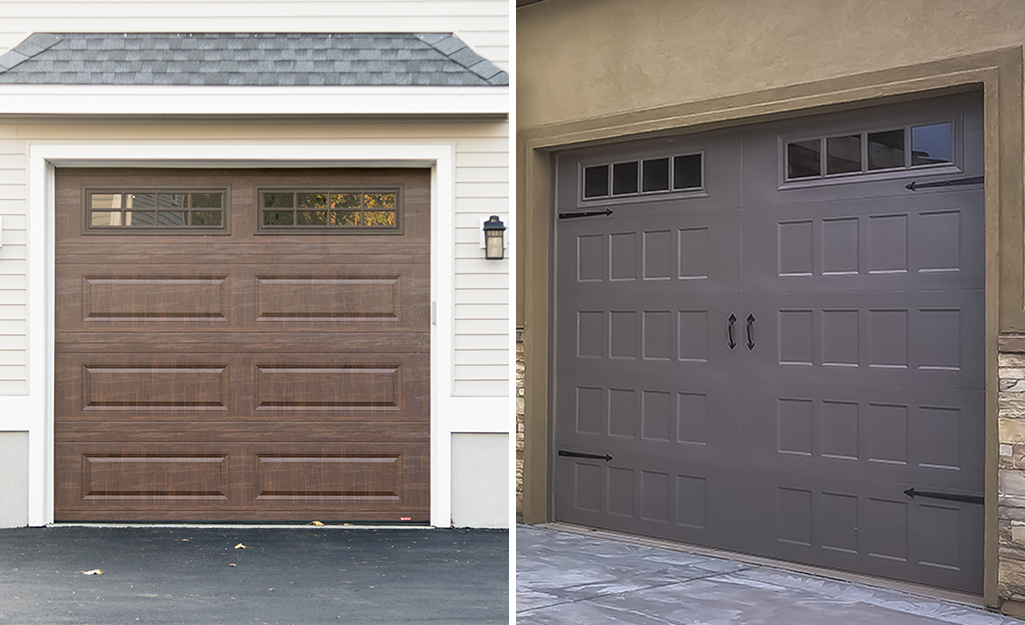
Insulated garage doors consist of two layers of material separated by foam insulation. The addition of insulation provides many benefits such as:
- Improved temperature control: Insulation keeps heat out in the summer and cold out in the winter. They can keep your garage more comfortable year-round. Insulated doors may even improve temperature conditions in rooms located beside and above the garage.
- Increased energy efficiency: If your garage is heated or air-conditioned, insulation can cut down on energy waste and potentially lower monthly bills.
- Enhanced durability: Insulated garage doors tend to be stronger and more resistant to dents and dings.
- Greater security: Due to their increased thickness, insulated doors are more tamper-resistant and can help protect your property.
- Quieter operation: Insulation reduces vibrations, so doors are less likely to rattle and shake.
- Potential boost in home value.
Tip: When shopping for a replacement door, take a look at your door from inside the garage. If you can see the outline of the panels from inside, your door likely isn't insulated.
Garage Door Styles
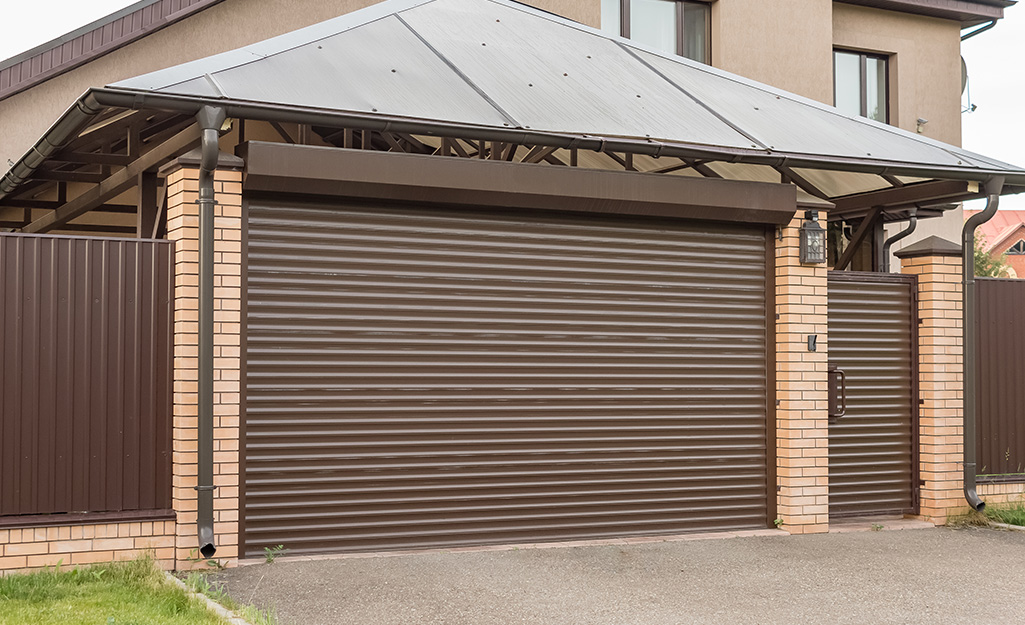
In addition to choosing the style of your garage doors, you’ll need to consider the type of mechanism that you prefer. The mechanism determines how the door opens and closes. There are three main types of garage door styles:
- Roll-up garage doors have multiple horizontal panels. When you open them, the panels form a coil and end up in a roll at the top of the door opening. This type of door requires less overhead space, making it ideal for small garages.
- Bi-fold garage doors have two horizontal slats that open outward and slide on a track. Like roll-up doors, they conserve space, but with the doors positioned at the side rather than above the garage door opening.
- Automatic garage doors are the most popular option for homes because they are quick and easy to open and close. The doors are positioned on a track system and slide upwards and inwards at the push of a button. Once fully opened, the door is parallel to the ceiling of the garage.
Garage Door Materials
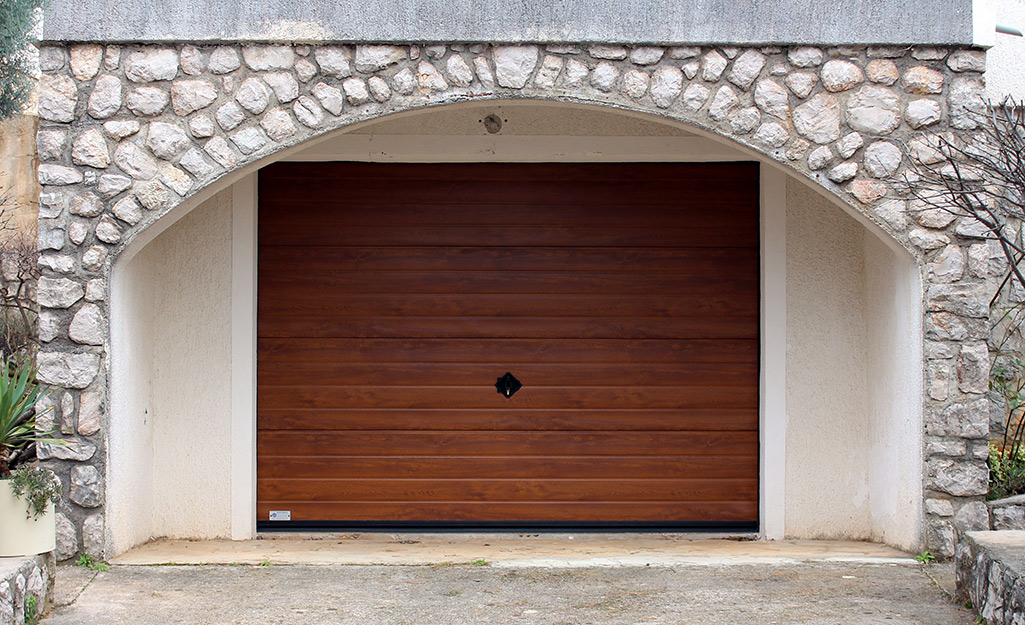
From wood garage doors to styles made of steel, garage doors can come in a variety of materials. Once you've decided on the type of garage door you want, compare material options by appearance, cost and durability.
Steel:
- Economically priced
- Suitable for all climates
- Lightweight, yet strong
- Low maintenance
- Prone to rust and corrosion
Wood:
- Visually appealing with warm almond, walnut and other brown finishes
- Provides natural insulation
- Works best in mild climates
- Needs regular maintenance
- Prone to warping, swelling and rot
Composite:
- Economical
- Resists warping, shrinking, corrosion and moisture damage
- Highly durable
- Suitable for many climates
- Low maintenance
Garage Door Sizes
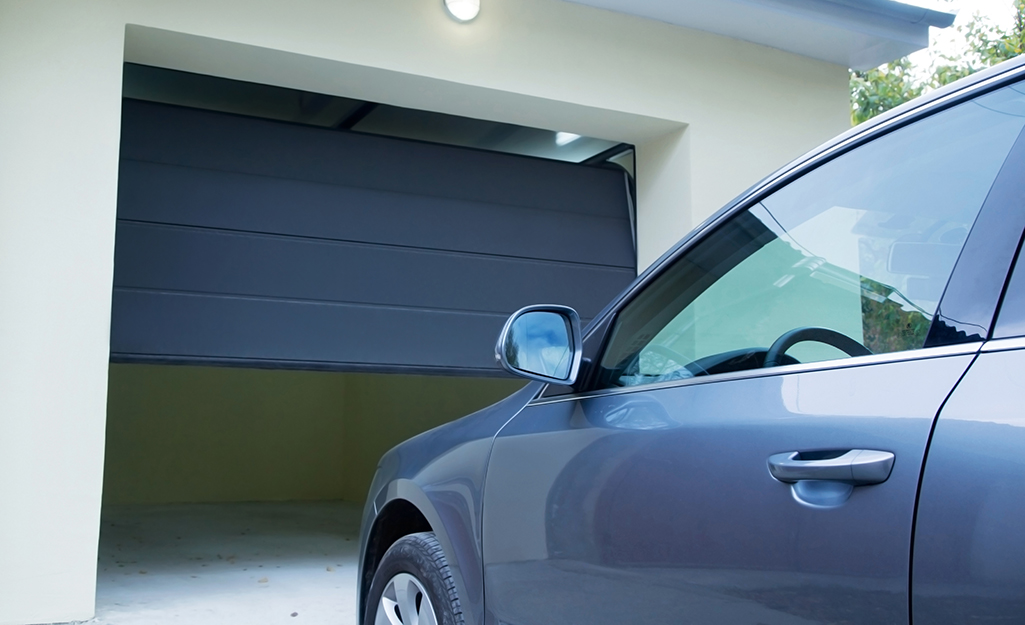
Standard sizes range from 8’ x 7’ to 16’ x 7’.
No matter the type, most garage doors are available in a single or double version. Some garage door designs come in both.
- Single garage doors are usually 8 to 9 feet wide and made to accommodate one vehicle.
- Double garage doors are usually 16 feet wide or wider and accommodate two vehicles.
To ensure the best fit, take accurate measurements to make sure that your new garage door fits the rough opening properly. The rough opening is the width and height of the opening for your door. The door you choose should match these dimensions:
- Sideroom: The amount of space from the edge of each side of the opening to the wall. This measurement determines how much room you have for tracks and controls.
- Headroom: The distance from the top of the opening to the lowest point of the ceiling. This will tell you how much clearance you have for your garage door system.
- Backroom: The measurement from the opening to the opposite wall. Systems require varying amounts of backroom. Many models require 18 inches beyond the height of the door.
Tip: Use a battery-operated, laser-measuring device. Quickly determine the dimensions for your new garage door with a high degree of accuracy.
To choose the right garage doors for your home, carefully consider style, insulation, materials and size. Pick doors that you love and that complement your home’s color and vibe.
Whether your home is ultra-modern, a cozy farmhouse or a classic Tudor, you’ll find a garage door that suits it. Browse our garage door selection with The Home Depot Mobile App to locate products and check inventory. We’ll take you to the exact aisle and bay.

































